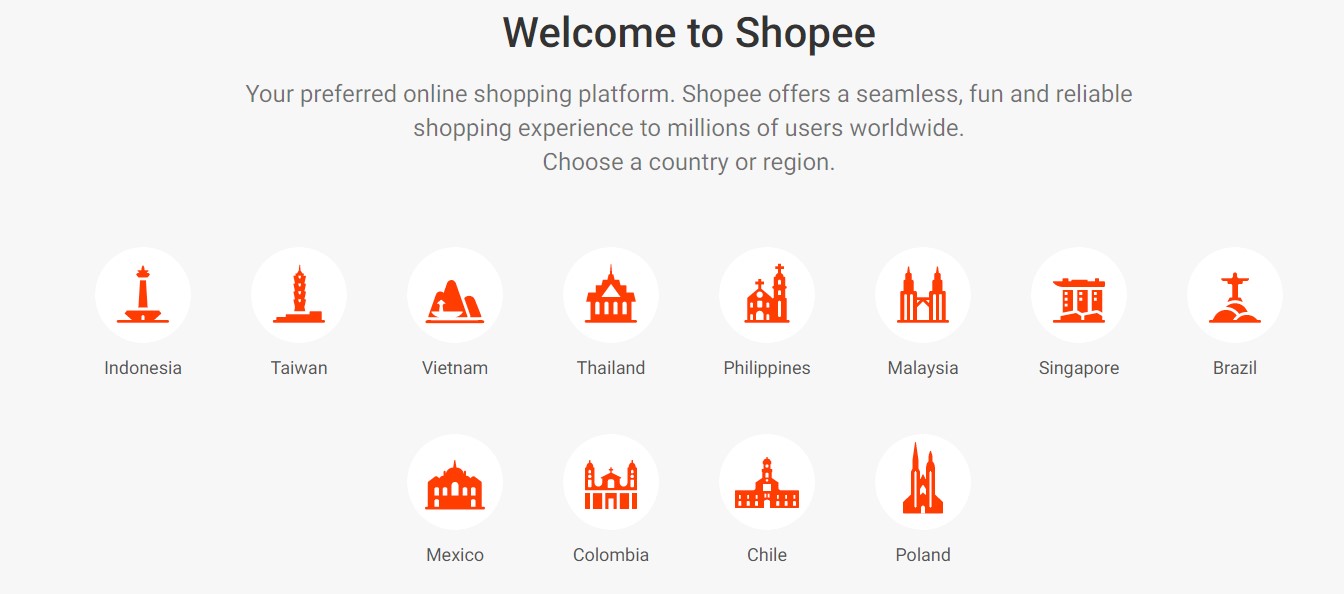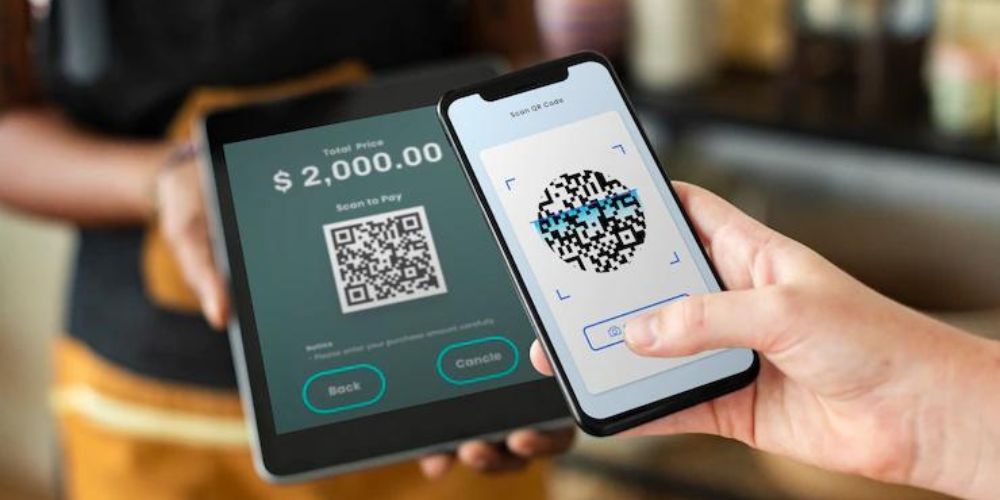Thanks to the rise in smartphone usage, eCommerce in Southeast Asia has grown exponentially in the recent past showing no signs of slowing down. In fact, eCommerce sales are expected to increase by over 20% in 2022 alone. This is the highest short-term growth recorded around the world!
Southeast Asia has struggled with an underdeveloped banking ecosystem for a long time. Even today, the World Economic Forum estimates that six in ten people in the region are unbanked or underbanked. But digital banking is now a reliable solution, thanks to internet connectivity and smartphone usage.
The region’s adoption of digital banking technologies has seen the growth of digital payment options and applications. These solutions have simplified the process of making online payments in real-time. The growth is being driven by new fintech startups, established banks, and even eCommerce giants who are all trying to beat each other and get more customers.
In this article, we will discuss what’s driving digital banking in Southeast Asia and how this affects the growth of eCommerce in the region.
Digital Banking in Southeast Asia
In the past few years, digital banking has changed quickly, leading to huge growth and change in Southeast Asia. Friendly regulations from government agencies encouraging digitalization, financial inclusion, and new ideas have helped make this possible.
This phenomenon has triggered many new players to enter the market and quickly establish themselves. A good example is Bank Neo Commerce which was launched in March 2021 and has already acquired over 10 million customers.
The region’s demand for digital banking has seen fintech develop exponentially, shaping the region’s finance sector. Everyone is competing to establish themselves as market leaders. They’re all driving innovation to encourage digitization, bank the unbanked, and make the digital economy a reality in Southeast Asia.
With that in mind, here are 5 main factors driving the growth of digital banking.
1. Smartphone and Internet Penetration
The rise of the internet and smartphone use have dramatically changed how people spend and bank their money. With over 70% of Southeast Asians having access to reliable internet, the rise of internet banking was inevitable.
Smartphones provide a platform that can be used to develop a reliable digital banking infrastructure.
2. Rise of Digital Economy and eCommerce
Unlike in the West, where credit and debit cards are common, performing online transactions in Southeast Asia was always challenging. This left a massive gap as traditional financial service providers couldn’t meet customers’ needs. Digital banking has helped simplify the process allowing customers to easily make payments online without needing cards.
3. Free Market and Large Talent Pool
One of the driving factors of digital banking in Southeast Asia has been free markets. It’s common for companies to operate in different countries without facing unfriendly competition from host nations. This has allowed some companies to operate throughout the region in harmony, which is beneficial to the end users and the industry’s growth.
Another factor that can’t be ignored is the talent pool. The region has produced some of the best developers who create secured technologies that protect customers when transacting online. And as the region’s young population joins the workforce, the tech talent pool is set to grow by 10% each year, according to the Singapore Economic Development Board.
4. Digitization of National ID System
Verification of user identity has been one of the challenges faced by digitization. Southeast Asia seems to have overcome this issue with a digital ID system that eases verification and makes electronic KYC possible. This allows for high-level transparency and lowers cases of fraud and money laundering.
5. The Rise of Online Shopping
Online shopping has seen massive growth, especially since the COVID-19 pandemic. This sharp increase in online purchases also boosts digital banking. For instance, most eCommerce platforms in Southeast Asia have partnered with online banks to streamline the customer experience and allow for secure real-time transactions.
The Boom of eCommerce in Southeast Asia
The boom of eCommerce in the Southeast Asia region can be attributed to improved infrastructure that enables last-mile delivery, increased internet connectivity, and change in consumer attitudes.
But one attribute that can’t be overlooked is digital banking and its role in keeping the eCommerce industry growing at unprecedented levels. Research by eMarketer found that sales will exceed the $100 billion mark in 2023.
Let’s look at the leading players driving this growth in the region.
Tokopedia

This is one of the eCommerce platforms with a mission to democratize commerce in Singapore. Since it was established in 2009, the platform boasts over 12 million registered merchants and over 800 million listed products.
Due to the shift in online transactions, Tokopedia sellers have increased their sales by over 70% on the platform. The increase is driven by the rise of digital banking, which increases financial inclusion in Indonesia. The two preferred payment methods on the platform are e-wallet and mobile/Internet banking– both being digital banking products.
Shopee

This platform has its headquarters in Singapore and operates throughout Southeast Asia, although it has also recently moved to the untapped markets of Latin America. Shopee is one of the region’s biggest players allowing both C2C and B2C sales. They also have an estimated yearly GMV of $60 billion.
The company has its established payment system, ShopePay, and integrated mobile wallet. It also partners with other digital banking solutions to offer merchants and buyers on their platform much-needed financial freedom.
Lazada

The Alibaba-owned eCommerce platform is the third biggest player in Southeast Asia. The company has an average monthly user base of 150 million people and plans to serve 300 million customers by 2030. Thanks to cutting-edge digital banking technologies from its Chinese parent company, Lazada has one of the region’s biggest logistics and payment networks.
eCommerce Sites Leading the Digital Banking Revolution
Digital banking in Southeast Asia has been spearheaded by eCommerce. For example, most businesses looking to establish themselves in the region often have to partner with eCommerce companies.
Affiliation with an established company gives new digital banks access to millions of customers who can start using their service to buy or sell on eCommerce stores.
A new trend that can’t be ignored is eCommerce companies choosing to cut off the intermediaries and apply for their own digital banking licenses. For example, Shopee and Lazada have already applied for digital banking licenses through the parent companies Sea and Alibaba’s Ant Group.
Most digital banks have also introduced various services to attract and retain customers. These services have helped them take on traditional banks, keep up with industry trends, and impact the industry’s growth. Some of these services include:
1. Financing for Merchants
Most Southeast Asians are unbanked, and credit card uptake is still in the infant stages. eCommerce giants and other digital banking solutions have risen to fill the gap and give merchants access to credit.
For example, super apps like GoTo have partnered with local banks in countries like Singapore to offer full-fledged banking services.
With this layer of financial flow, SMEs may now operate in a fundamentally different environment, pushing smaller businesses to move into previously unavailable sectors.
Early this year, Sea, which provides eCommerce and digital banking services, acquired majority control of the small Indonesian lender Bank Kesejahteraan Ekonomi, renaming it SeaBank. Akulaku, an Indonesian fintech startup funded by China’s Ant Group, also entered the race, becoming the largest stakeholder in Bank Yudha Bhakti, subsequently renaming it Bank Neo Commerce.
This will allow these digital banks to offer merchants and other SMEs loans and financing and encourage their digital customers to open bank accounts.
2. Buy Now, Pay Later Services
As online spending increases across Southeast Asia, tech giants and digital banking platforms have been fighting to control the wallets of consumers in the region. One of the common ways is online lending through Buy Now, Pay Later practices.
The BNPL service has been rising over the last few years. It has become a competitive segment within the mobile banking and eCommerce industry. According to FIS Global, BNPL is projected to be the world’s fastest-growing payment method by 2025. And this isn’t lost on digital banks increasingly investing in this sector.
Take Gojek’s PayLater services as an example. Its GoPay platform has transcended its origins as a simple electronic payment solution and currently lets users manage their bills, access loans, and even insurance services.
Two main advantages have driven the growth of BNPL services:
Access to data:
These digital banking platforms and eCommerce stores have amassed their customer’s financial data and spending habits and can now rate each customer individually and establish their creditworthiness. Such access to data allows them to decide how much credit a customer qualifies for when they want to purchase using the BNPL method. This approach is more or less the same as using credit scores in the US – the average score is 716 in the United States, which most institutions would regard as good.
Lending today has become a lot more scientific rather than being a pure art form.
KV Srinivasan, Executive Director & CEO, Profectus Capital
Ready market:
For decades, traditional banks have struggled to offer small-scale credit as the “would be” recipients of these loans are often unbanked. For this group of people, the first time they’re accessing credit could be when they select the pay later option inside payment platforms to complete an eCommerce purchase.
Digital banks can also partner with local banks to allow users to open traditional and custodial bank accounts for their children. This will increase financing inclusion rates in the region and give the segment that has often been neglected access to credit and a chance to build their credit score.
Note: New customers should keep in mind that if their child’s bank account makes more than $2.2k in unearned income (i.e., interest), taxes will need to be paid.
3. Fraud Protection Mechanisms
One thing that has plagued eCommerce and hindered its growth in developing countries is digital fraud. As the industry grows, so do cyber threats and online fraud. The list of potential fraud is long, from account takeover to refund fraud and loyalty fraud to social engineering.
To manage the threat, digital banks are implementing modern state-of-the-art technologies that can protect users’ financial information. Some of the security layers that digital banking has introduced to curb fraud include the use of PINs and OTP codes. They also utilize AI-powered user management systems that detect illegal use of applications. Apart from these, some have launched biometric verification using facial and fingerprint recognition features.
eCommerce platforms have also invested heavily in their customer care services. It has made it easier to detect fraud and limit the damage consumers face when they have been compromised. Simple practices like taking calls with customers help verify transactions and reduce fraudulent purchases.
Additionally, these companies have invested heavily in educating their partners on best cybersecurity practices.
Governments in Southeast Asia have stepped forward to help stop fraud and other cybersecurity threats as well. However, even though they have made it easy for digital banking to grow, they have also put in place strict regulations:
- Prevent misappropriation of user data by service providers
- Encourage knowledge-sharing and capacity-building. This helps create a secure digital economy that can drive the region forward economically.
- Created standards that must be adhered to by all digital banks
- Oversee and audit the infrastructure that digital banking is built on and offer recommendations
- Encourage joint programs that build cybersecurity and fraud awareness
Keep Up with Emerging Trends to Grow Your eCommerce Store
The landscape is constantly changing within the region. So, if you want to grow your eCommerce business in Southeast Asia, you must follow new trends in digital banking. These include:
- Using the latest industry-standard software to protect yourself and your customers
- Adopting various payment methods offered to ensure you don’t miss clients
- Using fulfillment centers throughout the sub-continent to increase your client base
- Allowing new methods of payments like BNPL
- Taking advantage of financing options offered by digital banks that target eCommerce merchants









